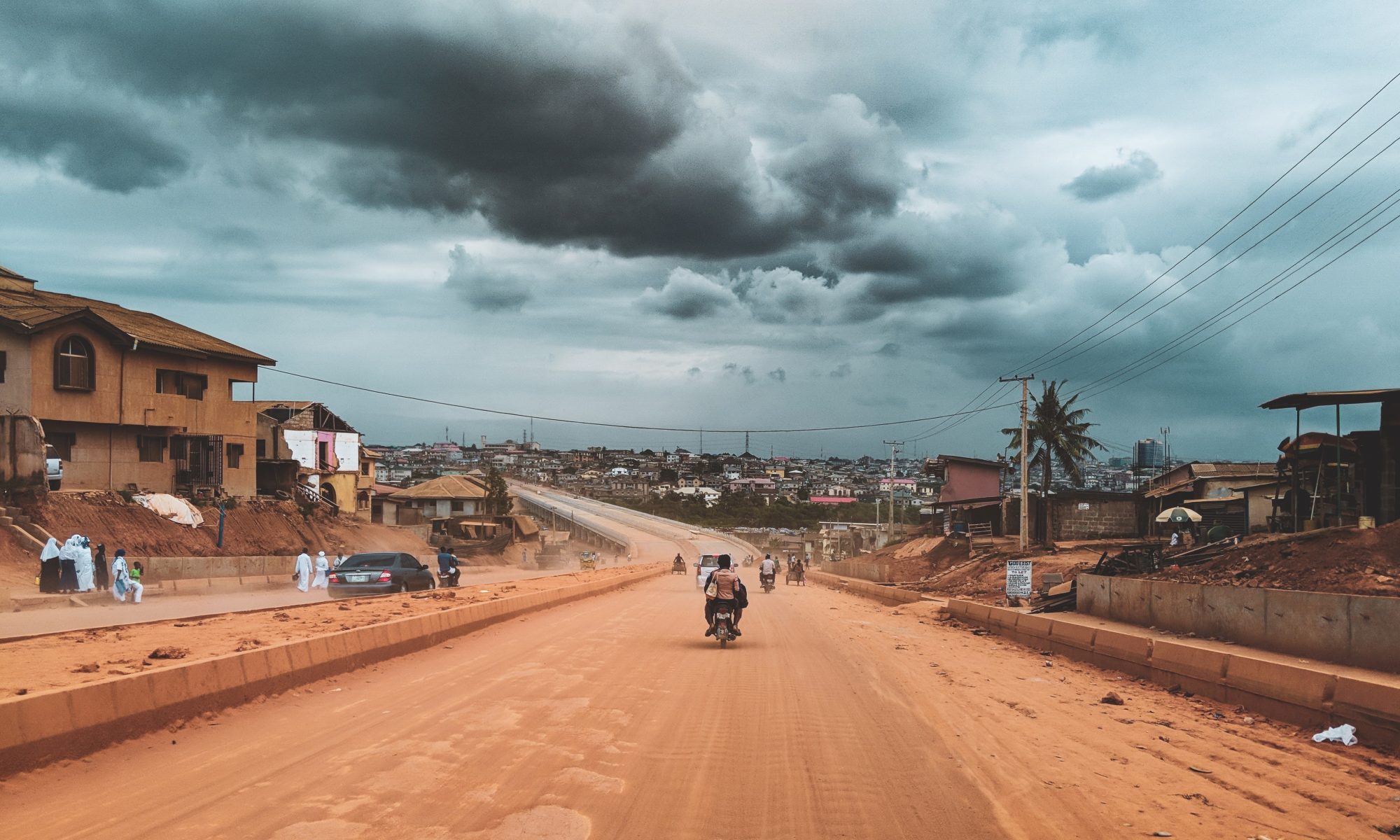Violence moves to rural areas as urbanization increases in North and West Africa
By Olivier Walther (University of Florida), Steven M. Radil (U.S. Air Force Academy), Marie Trémolières (OECD), Matthew Pflaum and David Russell (University of Florida), and Alexander Thurston (University of Cincinnati).
3/21/2023
Urbanization has not led to an increase in urban violence in North and West Africa. Quite the opposite. A new OECD report published today shows that political violence is becoming more rural on both sides of the Sahara. The expansion of Jihadist insurgencies explains this ruralization of conflict that affects a growing number of civilians and border regions.
Conflicts are becoming more rural
The report illuminates how, as North and West Africa becomes more urban, violence tends to shift to rural areas (Figure 1). “The increase of rural violence observed since the early 2010s contradicts the common assumption that the urbanization of the African continent would lead to more violent conflicts in cities,” says Dr. Olivier Walther, a geographer at the University of Florida who coordinated the analysis of 48,000 violent events in 21 countries.
Figure 1. Violent events by demographic categories in North and West Africa, 2000-22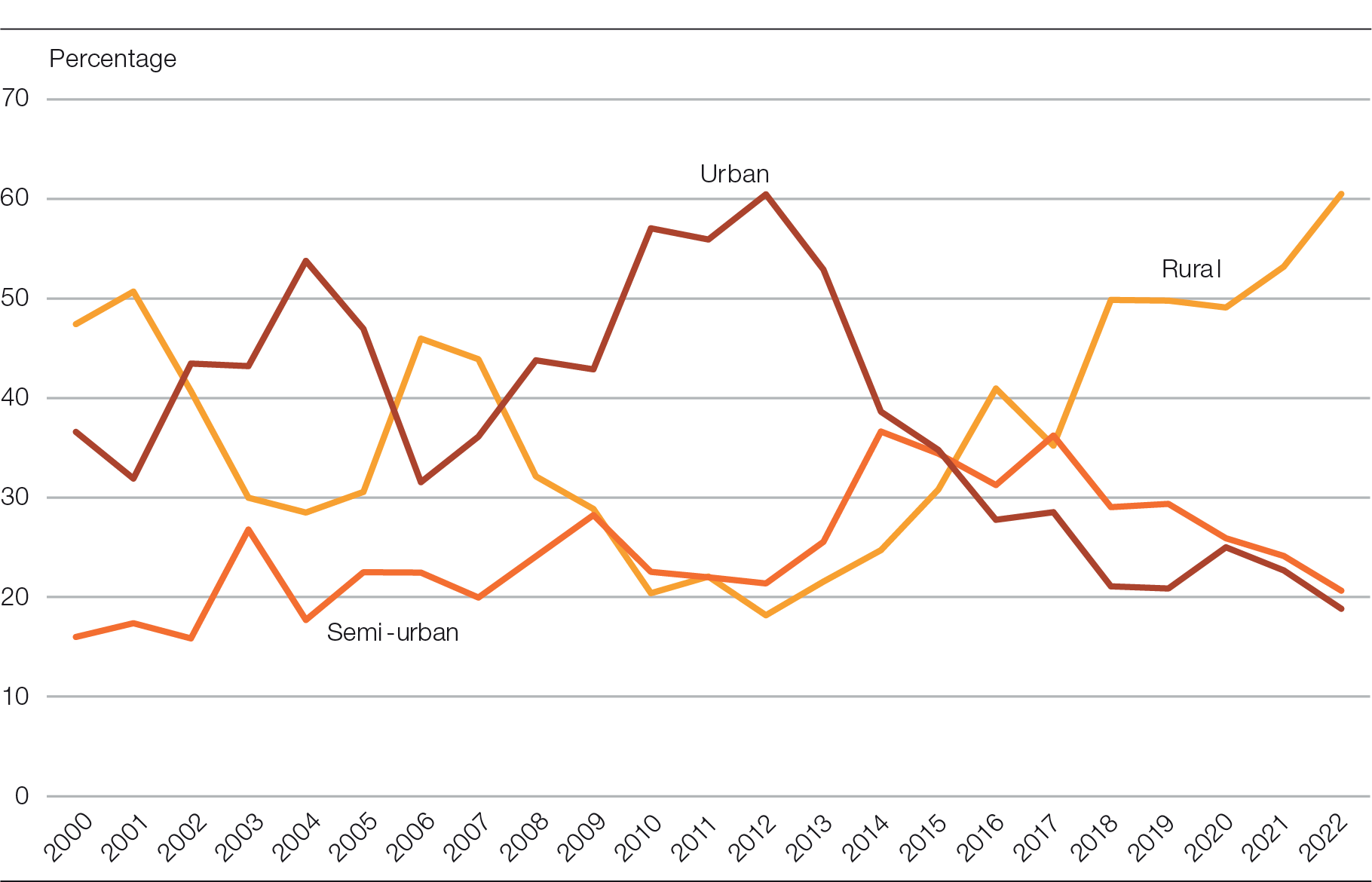
Note: The data is available through 30 June 2022. Source: OECD/SWAC (2023) based on ACLED and WorldPop data.
Less than 20% of the battles, violence against civilians and remote attacks recorded in 2022 in West Africa are in urban areas, relative to 70% a decade ago. A similar trend can be observed in North Africa, where urban violence has been cut by half since the early 2000s. Overall, 60% of the violent events observed in 2022 are in rural areas across the region.
Violence clusters near urban areas and borders
While most of the violence has occurred in areas of lower density, political violence is nevertheless spatially associated with urban areas. The study confirms that violent events most frequently occur near cities and urbanized places. In the last 22 years, 47% of all violent events occurred within just 10 km of an urban area, and 68% occurred within just 40 km. In other words, the closer one gets to an urban agglomeration, the more violence can be found in aggregate, but these events are still occurring in rural areas (Figure 2). The strong relationship between urban population and violence highlights the importance of North and West African cities as sites of state authority, economic importance, religious education, and political control.
Figure 2. Violent events by distance from urban areas and borders in North and West Africa, 1997-2022
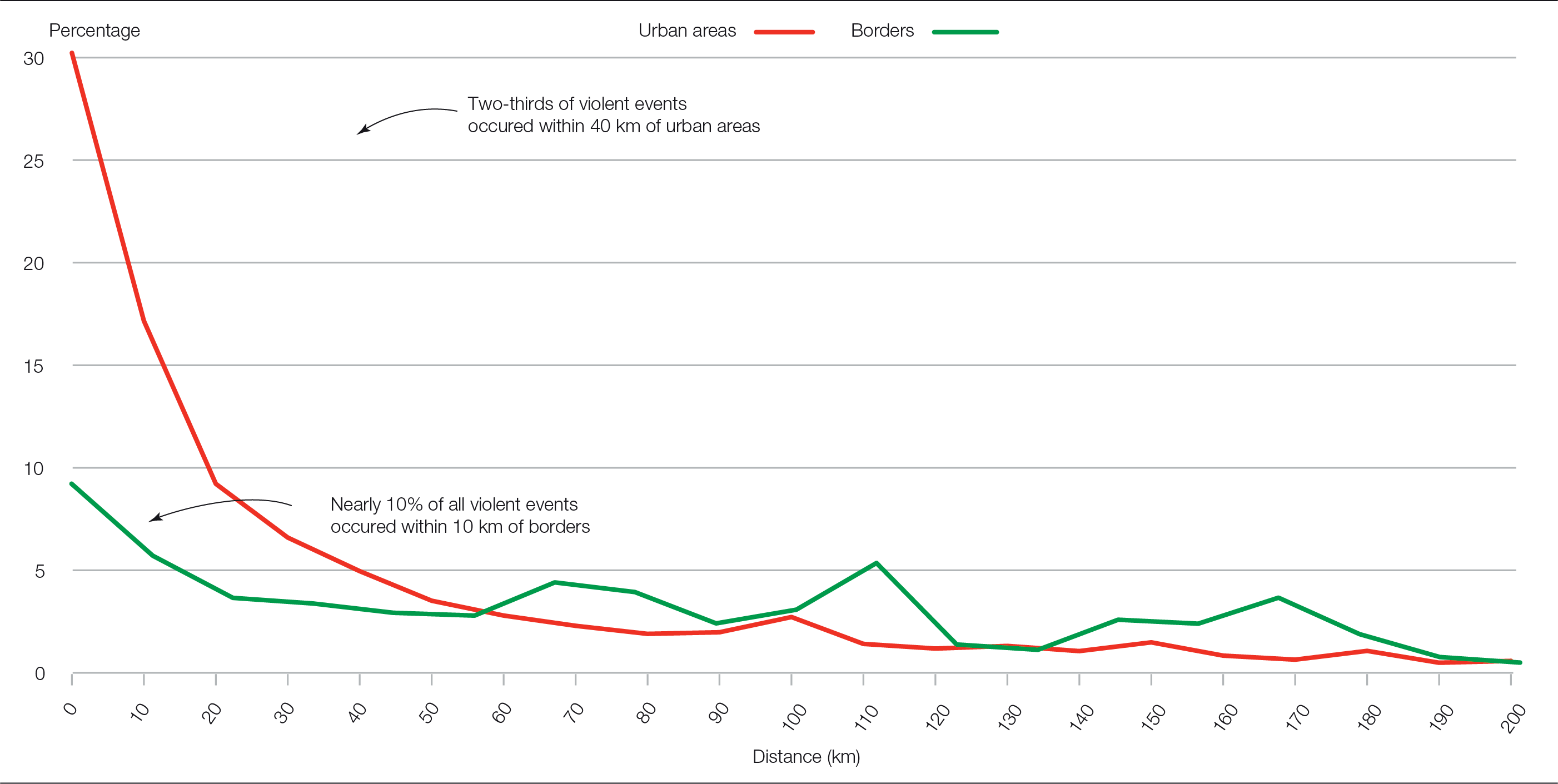
Sources: OECD (2023) and OECD (2022) based on ACLED and WorldPop data.
These results expand previous research documenting the changing geography of conflict in North and West Africa since the end of the Cold War by the OECD Sahel and West Africa Club (SWAC), who noted that the further from the border, the fewer violent events are observed. According to Dr. Marie Trémolières, who leads SWAC’s security program in the region, the fact that the proximity to borders and cities shapes political violence fills a knowledge gap for policy makers. “Understanding where violence emerges, spreads, and eventually dissipates across the region is a necessary first step toward addressing its root causes,” she says.
Urban violence predominantly affects small cities
Urban violence primarily affects small cities rather than larger ones (Figure 3). Nearly 40% of violent events and 64% of fatalities occurred in small urban areas of less than 100,000 inhabitants, which represent 92% of the cities and 32% of the population of the continent in 2015. Political violence is particularly rare in large cities where it accounts for only 3% of violent events and 1% of fatalities.
For Dr. Steven Radil of the U.S. Air Force Academy, the spatial proximity of small urban centers to the rural conflict areas explains why a majority of the victims do not live in cities. “Our findings speak to the reality that violent extremist groups tend to be based in low population regions and to operate well away from the centers of state power often found in major urban areas,” he says.
Figure 3. Violent events and fatalities by urban categories in North and West Africa, 2015
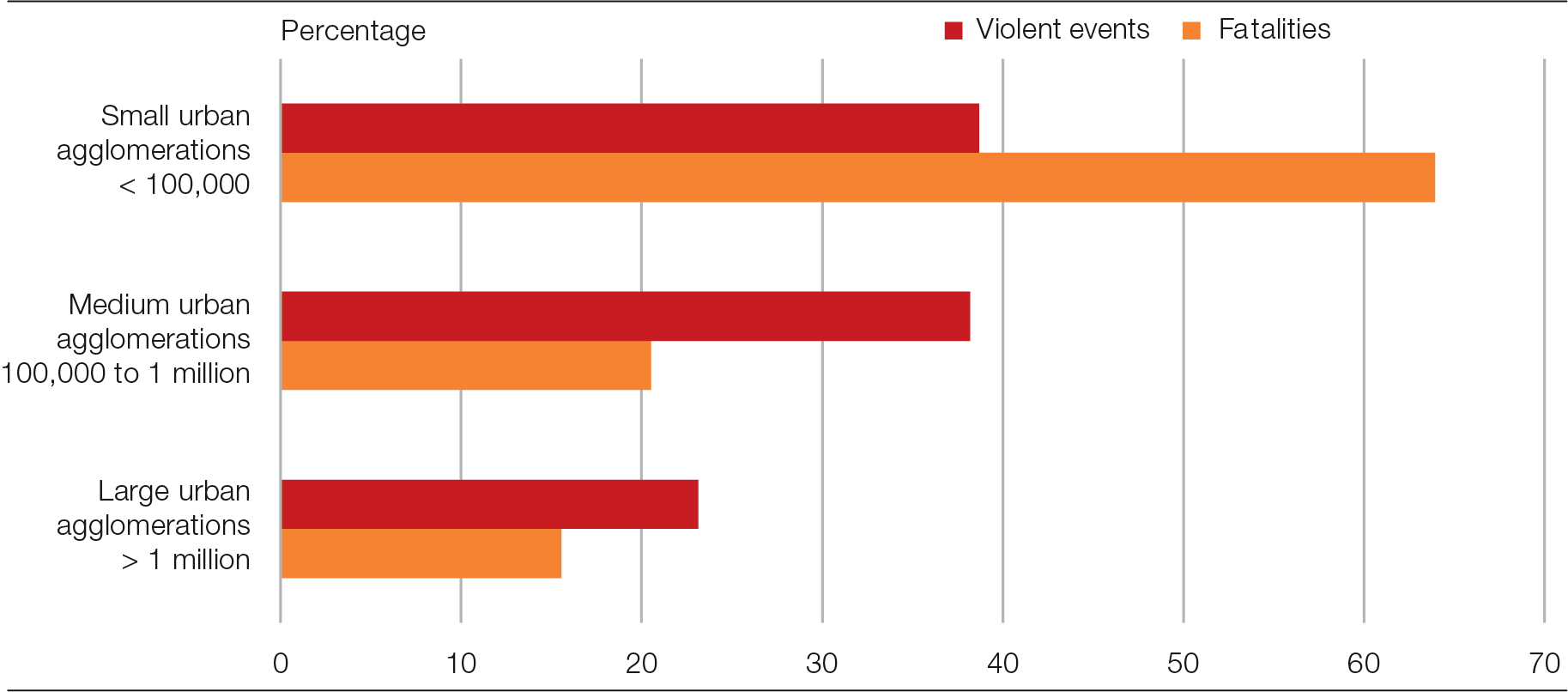
Source: OECD/SWAC (2023) based on ACLED and Africapolis data (OECD/SWAC, 2020).
Rural violence is driven by Jihadist insurgencies
The study suggests that the relationship between cities and political violence varies considerably across and within states in North and West Africa. While most violent events tend to occur in close proximity to urban areas at the regional level, some states, such as Burkina Faso, Mali and Niger, seem to suffer more rural conflict than others (Figure 4). The fact that these three countries follow the same trend is hardly surprising, since all of them are currently confronted with major jihadist insurgencies.
Figure 4. Violent events by distance from urban areas, selected countries, 2000-22
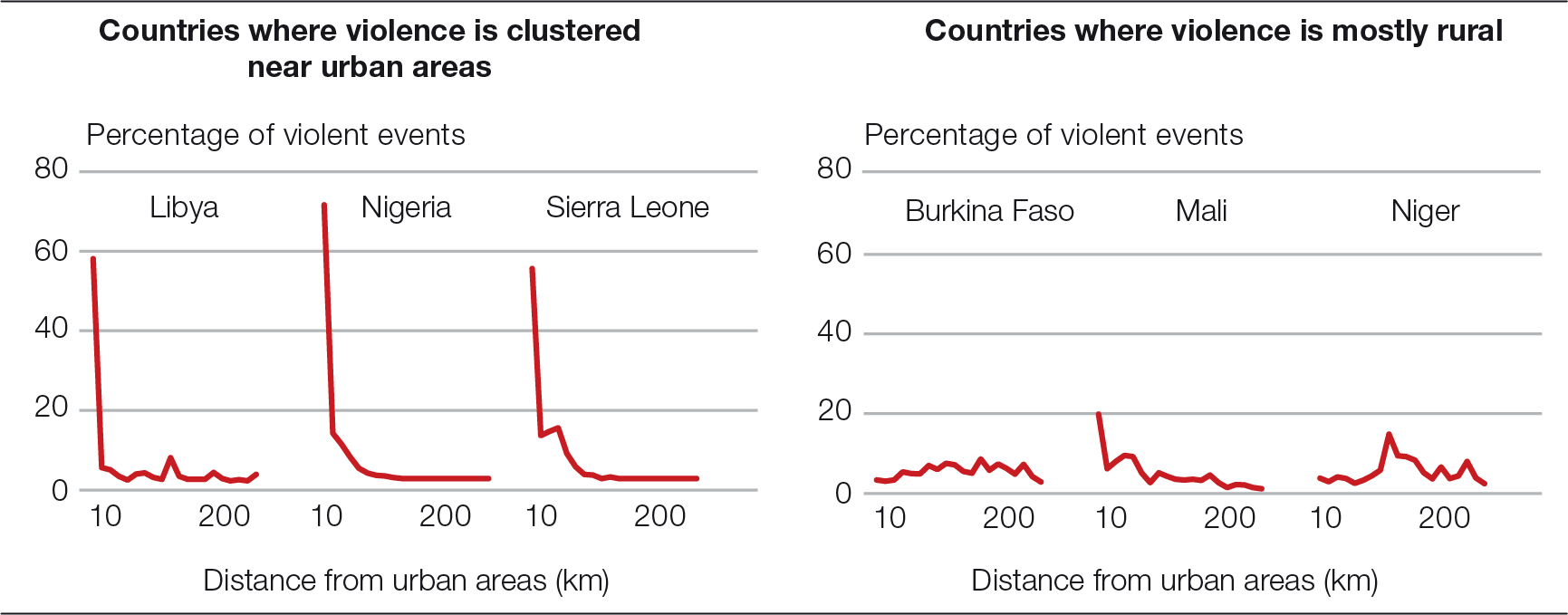
Source: OECD/SWAC (2023), based on ACLED and WorldPop data.
“Jihadist organizations have developed an unusual relationship with cities in the region,” says Dr. Alexander Thurston, a religion expert from the University of Cincinnati who was involved in the study. “Some jihadist groups, like Boko Haram, began as urban movements, while others deliberately seek out remote hideouts, raid military outposts, and kidnap Westerners and others in the deep Sahara.”
The report suggests that conflicts over the control of cities will intensify. The current ruralization of violence observed in the region does not mean that large cities have lost their strategic importance, as they will ultimately remain key locations and long-term goals for state forces, rebels, and extremist organizations. The report concludes that the growing concentration of violence in rural areas corresponds to one of the many stages that conflicts pass through in their life cycle. As conflicts emerge, develop, and eventually end in one part of the region, the importance for the belligerents of rural or urban spaces shifts.
References
- OECD/SWAC (2020), Africa’s Urbanisation Dynamics 2020: Africapolis, Mapping a New Urban Geography, West African Studies, OECD Publishing, Paris, https://doi.org/10.1787/b6bccb81-en.
- OECD/SWAC (2022), Borders and Conflicts in North and West Africa, West African Studies, OECD Publishing, Paris, https://doi.org/10.1787/6da6d21e-en.
- OECD/SWAC (2023), Urbanisation and Conflicts in North and West Africa, West African Studies, OECD Publishing.
- Radil S, Walther O, Dorward N, Pflaum M, Trémolières M. (2022), Conflicts are becoming increasingly rural in North and West Africa. OECD Development Matters, 26 July.
More information
- Dr. Olivier Walther, Assistant Professor, Department of Geography, University of Florida, Gainesville FL 32611, United States, email: owalther@ufl.edu, phone: +1 352 273-4739
- University of Florida African Networks Lab.
- University of Florida Sahel Research Group.
- OECD Sahel and West Africa Club.
- Download a copy of the OECD/SWAC report here.
- Follow us on Twitter! @ojwalther, @UFAfricanNetLab, @UFSahelResearch, @SWAC_OECD, @PflaumMatthew, @DavidGuyRussell
Funding
This research is funded by the OECD Sahel and West Africa Club (SWAC) as part of its annual report on security. It builds on a recent Memorandum of Understanding (MoU) signed between the University of Florida (UF) and the OECD to reinforce existing ties and co-operation between the two institutions.
Photo by Joshua Oluwagbemiga on Unsplash.
